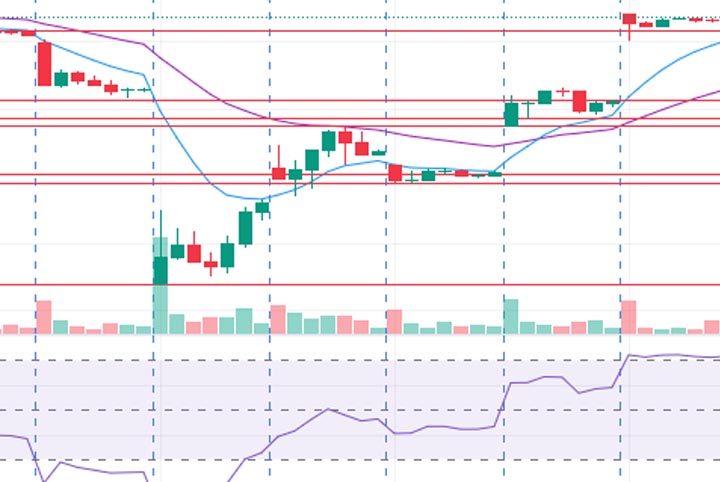Options trading can be incredibly rewarding—but for most retail traders, it ends in losses. The harsh reality is that 95% of option buyers lose money, despite the promise of high returns.
Why does this happen?
The short answer: theta decay, erratic price movement, market traps, and even hidden costs from brokers. But let’s break it down and show you how to adapt, survive, and win in the options game.
🚫 Why Long Positions Fail for Option Buyers
New option traders often assume buying a call or put is like buying stock: if the market moves in your favor, you profit.
Wrong.
Options are decaying assets—they lose value over time, even if the underlying stock or index moves slightly in your favor.
❌ Key Reasons Long Options Fail:
-
Theta Decay: Every passing day eats into your option premium.
-
IV Crush: After big events (earnings, RBI policy, etc.), implied volatility drops—premiums collapse.
-
Small Moves Aren’t Enough: The move needs to be sharp and fast to overcome theta and IV drop.
📉 Example: You buy a Nifty 19,000 call expecting a rally. Nifty moves up only 50 points. You think you’ve won—but your option still loses value because of time decay and low IV.
⏳ Theta Decay: The Silent Killer of Option Buyers
Theta measures how much an option’s price decays with time. The closer to expiry, the faster the decay.
How Theta Hurts You:
-
Weekly Options: Can lose 40–60% value in just 2–3 days.
-
Slow Movement = Loss: Even if the market moves your way slowly, you’ll lose.
-
Expiry Day Trap: Out-of-the-money (OTM) options become worthless in hours.
🔒 Quick Tip: Don’t hold options longer than 1–2 days unless you have a strong directional conviction.
⚡ Scalping: The Last Hope (But It’s Not Working Either)
Scalping—quick in, quick out—is often the only strategy option buyers rely on to dodge theta.
Why Scalping Used to Work:
-
Minimal theta impact (trades closed in minutes/hours).
-
Capitalizes on volatility spikes.
-
Small gains add up (5–15% quickly).
Why Scalping is Failing Now:
-
False Breakouts: Market fakes out, then reverses.
-
Low Volume Moves: Breakouts lack strength.
-
Choppy Markets: Sideways action kills momentum.
📉 Example: You buy a call on a breakout above 19,100. Nifty breaks out, then immediately reverses. You’re trapped—and theta starts eating your premium.
🌙 Gap-Ups & Gap-Downs: The Premium Killers
One of the worst traps for option buyers? Overnight gaps.
How They Crush You:
-
Premium Already Priced In: A 200-point Nifty gap up? That’s already factored into the call premium at open.
-
No Follow Through: After a gap, markets often trade sideways. You bought high… and theta slowly destroys your premium.
-
Trapped Buyers: You chase the move, but the market gives nothing after open.
📉 Example:
-
Monday: Nifty closes at 19,000.
-
Tuesday: Opens at 19,250.
-
You buy a call, expecting more. But Nifty moves in a tight 19,250–19,300 range.
-
By afternoon, your premium is down 30–40%, even though the index didn’t drop.
💸 Hidden Costs: Broker’s Extra Fees for Market Order Are Killing You Too
Even if you manage to catch the right move, some brokers charge up to 2.5% extra on market orders. This means you’re already in a loss the moment you enter a trade.
Why This Matters:
-
On a ₹1,000 premium, you’re paying ₹25 just to enter.
-
Combine that with slippage and theta, and your breakeven gets pushed even higher.
-
If you scalp multiple times a day, these charges add up fast.
💡 Solution: Use limit orders when possible. Choose brokers with lower option trading fees or flat-rate models.
🛠️ Practical Solutions: How to Survive as an Option Buyer
Yes, the odds are stacked against you—but smart traders adapt.
✅ Here’s how you improve your edge:
-
Trade Only High-Probability Setups
-
Breakouts with strong volume.
-
Big events (Fed, RBI, GDP) = clear triggers.
-
-
Use Spreads Instead of Naked Options
-
Bull call or bear put spreads reduce theta risk and cap loss.
-
-
Avoid Holding Overnight
-
Gaps can destroy you unless you’re extremely confident in a trend.
-
-
Pick the Right Expiry
-
Trade options with 2–5 days to expiry: enough time for a move, not too much theta.
-
-
Wait for the Market to Settle
-
First 15–30 minutes are volatile—avoid jumping in blindly.
-
Let price action stabilize before entering.
-
🧠 Final Thoughts: Adapt or Be Left Behind
Options trading isn’t just risky—it’s engineered to test your discipline, timing, and strategy. If you’re blindly buying options and holding, you’re playing a losing game.
But if you adapt—scalp smartly, use spreads, avoid traps, and control costs—you can flip the odds in your favor.
✅ TL;DR — Key Takeaways
-
❌ Avoid long option holds — theta decay will bleed you out.
-
⚠️ Don’t fall for gaps — premiums often die after the open.
-
🧠 Use spreads — debit/credit spreads reduce risk.
-
💸 Watch for broker charges — 2.5% extra charge on market orders can kill your profits.
-
⚡ Scalping still works — but only on high-volume, real breakouts.
Still losing money buying options?
Maybe it’s not the market—maybe it’s your strategy. Time to level up.
👇 What’s your biggest struggle with option buying? Drop it in the comments!



